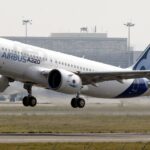Since the onset of COVID-19, we have had to reconsider the necessity of lifestyle choices, separating them into the categories of essential and non-essential. This is very much the case with Travel.
With the roll out of vaccination programmes across the world and hopes of travel from May 17 for the UK, the line is beginning to be erased, but only just. Stringent measures are still in place for both staff and passengers travelling abroad with airlines homing in on personal etiquette and hygiene, yet there is still a concern over how safe it is for people to board a plane when social distancing is almost impossible.
A Positive Approach for a Negative Result
Most airlines require passengers to take a COVID-19 test before checking in and departing overseas. For British Airways (BA) and United Airlines (UA), they stipulate that the test must be completed within three days of their travel and the result must of course be negative. Passengers must also have to hand documents that may be relevant to their validity to travel, such as proof of vaccination/s. Passengers must also wear a face covering, unless they are not of age to do so (BA states that it is acceptable for children under the age of 11 to be an exception to this rule, following UK Government guidelines), or if medically exempt.
But does this rule out all risks of danger? Perhaps not…
As stated by UK government officials, ‘‘as many as 1 in 3 people who are infected with coronavirus never have symptoms.’’ And receiving a negative result whilst experiencing no symptoms ‘‘does not guarantee that you do not have the virus.’’
There also lies the issue of how effective the COVID-19 vaccination is given that there are many makes in the world whilst belonging to a panacea that is still quite new.
The UK Government advises us to continue to follow safety guidelines such as social distancing and staying safe when outside your home… this being quite difficult when confined on a plane.
How Safe is it for Flight Attendants?
As cited by the National Geographic, a world economic report showed that transportation workers are most likely to be infected by disease. Taking into consideration the three physical attributes covered in the database: Contact with Others, Physical Proximity, and Exposure to Disease and Infection, flight attendants scored 75.7 out of the average 30.2 of the 966 jobs. Flight attendants could thereby contract the virus by assisting passengers with their luggage, ensuring safety checks onboard, and when serving food and drinks (a time when passengers remove their masks before and during consumption).

Exits are here, here, and here…
Recently, videos have surged showing passengers fighting with one another over the issue of face masks. Nine months ago, a fight erupted on a KLM flight when two passengers refused to wear a mask, leading to punching and bloodshed. A month later, on a flight from Utah to Arizona, a passenger was escorted off the plane by police after opting to wear a visor over the required face mask. This raises the question of how safe it is for passengers and staff when the airplane becomes a place of violence amid coronavirus politics.
But is it all that bad…?
Despite the odd chance of brawls and rule breaking, research has shown that aircraft cabins are among the safest of public indoor environments thanks to air filtration systems that are in place on aircrafts such as Boeing. Recently a study took place to test this out. In co-operation with Boeing, United Airlines et al proved how quickly particles could be removed when released from a cough. Testing was conducted inside a Boeing 767-300 and a Boeing 777-200. Deputy commander of U.S. transportation, Dee Mawbourne commented that ‘‘with the scope of the test, the results showed an overall low exposure risk from aerosolized pathogens like COVID-19 on these aircraft[s].’’ However, I would argue that this depends on how frequently these filters are changed and if this is the case for all aircrafts.

Airlines such as Qatar and Emirates may have introduced enhanced safety measures to help reduce the risk of harmful substances; the act of safety checks and face coverings may decrease the chance of the coronavirus from spreading, yet with the close proximity of people, there is still the risk of infection. It may be worth considering the risks and to fly only when necessary.
So how safe do you think it is to board a plane amid a pandemic? Let us know below.









